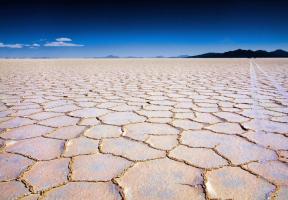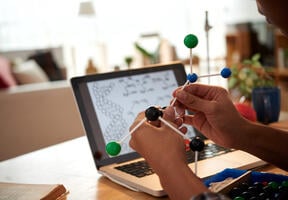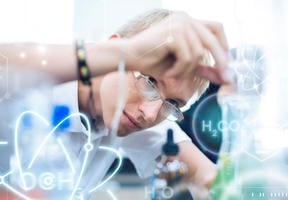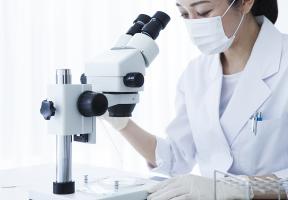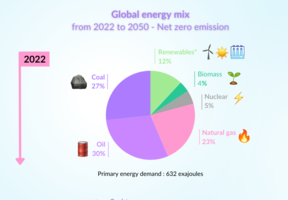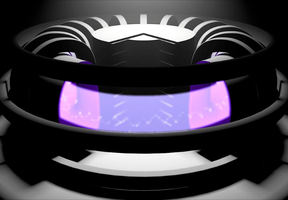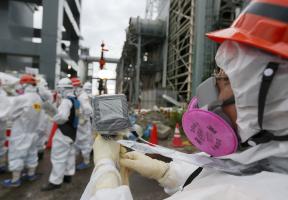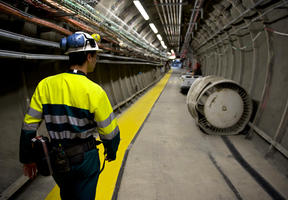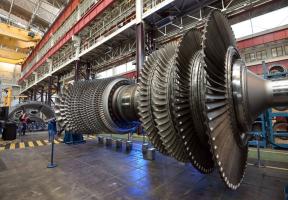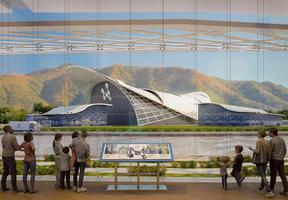Inside a Conventional Nuclear Reactor
5 min read
The is the tool for collecting and converting the great quantities of energy produced by the processes. Its function is to control this fission and to convert the energy collected in the form of . As in a conventional plant powered by gas, or heating oil, steam drives a turbine generator to produce 1.

© Nuclear reactors recover the heat from nuclear fission to produce steam, which drives a turbine generator to produce electricity. AFP PHOTO / JEAN-CHRISTOPHE VERHAEGEN
Nuclear fission is the disintegration of heavy nuclei, like those of after a collision with a . Other neutrons are released, which in turn trigger new fissions.
As the neutrons are ejected at an extremely high speed, they risk bouncing against the nuclei without breaking them apart. They therefore need to be slowed down. Moreover, in order to avoid a runaway (an out-of-control chain reaction), the proliferation of these neutrons must be avoided by absorbing a part of them, about two out of three.
In the most common types of reactors (PWRs or BWRs - see below), the nuclear is placed in a steel tank filled with water. This water slows the neutrons, thanks to its atoms. Graphite is another speed moderator, but it is gradually being phased out.
The rods
In order to absorb the excess neutrons, neutron-absorbing materials (rods made of ) are placed in the aqueous medium. The pellets of nuclear fuel are loaded into rods made of zirconium tubes. They are grouped in a square base assembly with empty tubes positioned between them. The boron rods are slipped into these tubes. By raising or lowering the tubes slightly, the absorption of the neutrons can be reduced or increased. In the event of an incident, the regulating rods will fall automatically and shut down the reactor. However, the heart of the reactor will remain very hot for months and must continue to be cooled. It was the lack of cooling that led to the Fukushima accident.
Water circuits
The tank's water, which has been heated to a high temperature by the nuclear reactions, circulates in a closed circuit known as the primary circuit. This hot water comes into contact, in a , with the pipes of another closed circuit known as the secondary circuit. Inside the pipes, the water turns to steam that will drive the turbine.
In order for the system to operate continuously, the water in the secondary circuit must be cooled before it returns to the steam generator. For this purpose, a third circuit is put into place. Cool water is taken from a nearby river or the ocean and circulated in a condenser whose multiple pipes make it possible to return the steam in the secondary circuit to a liquid state. The condenser's water, which has not been in contact with , is then released into the environment.
The cooling towers
If there is an insufficient flow from the water sources located around the power plant, cooling towers evacuate the heat towards the exterior. The hot water coming from the condenser is then cooled by the air current that rises in the tower, like the suction effect of a giant chimney. Thus, the white clouds that rise above power plants are made up of water vapor.
The six types of nuclear reactors
Reactors are described according to their fuel (natural uranium enriched to varying degrees, MOX or thorium), the moderator that controls the chain reaction(water or graphite), and the heat transfer medium that carries the heat produced towards the turbine (water, gas, sodium or molten salt).
- Most of the reactors either in operation or planned in the world are Pressurized Water Reactors (PWRs). French reactors are PWRs. They are fueled with enriched uranium and/or MOX. Water is both the moderator and heat transfer medium (or coolant)2.
- One quarter of the reactors in use in the world are Boiling Water Reactors (BWRs). They are fueled with enriched uranium, using water as both the heat transfer medium and moderator. In contrast to PWRs, there is no secondary water circuit. Water is vaporized in the reactor core and passes directly into the turbine. The containment system prevents the spread of radioactive products. Most BWRs are located in the USA, Japan, Sweden, Finland, Russia and Switzerland.
Three other types are much less widespread:
- Gas-Cooled Reactors (GCRs) using enriched uranium as the fuel and graphite as the moderator. There are around fifteen of them, all in the UK. GCRs are generally small, between 100 and 300 MW.
- Light Water Graphite-Moderated Reactors (RBMK, for Reaktor Bolshoy Moshchnosti Kanalnyy), which are fueled with low-enriched uranium and use ordinary water as the heat transfer medium. There are around fifteen of them, developed by the former Soviet Union.
- Heavy Water Reactors (HWRs) using a hydrogen (deuterium) which is a combination of oxygen and a hydrogen isotope (deuterium). There are fewer than 50 units worldwide, mainly in Canada and India.
Lastly, Generation IV Fast Neutron Reactors (FNRs), which would use all of the nuclear fuel. Neutrons are not slowed down, they are still at the prototype stage. (See the article " Nuclear reactors of tomorrow".)
Sources :


